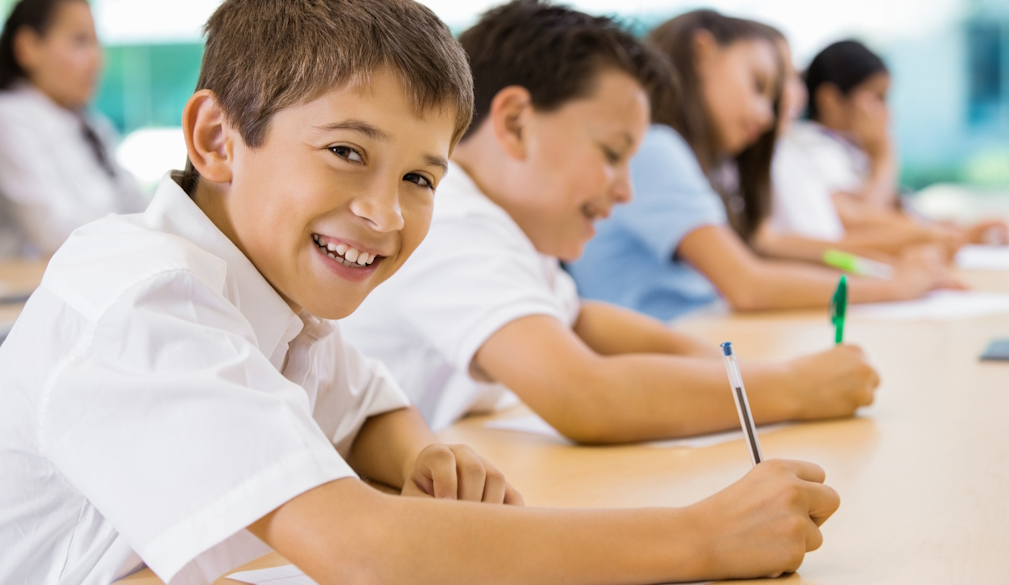There’s a new ‘rapid review’ into school bullying. Research shows we need to involve the whole school to stop it
- Written by Fiona MacDonald, Principal Research Fellow, Institute for Sustainable Industries and Liveable Cities, Victoria University

About one in four students report being regularly bullied[1] in Australian schools.
Children who are bullied[2] can feel anxious and excluded, stop sleeping and eating well, and lose interest in school. There are serious potential long-term effects[3], which include anxiety and depression. Being bullied is also a risk factor for suicidal thoughts and behaviours.
Following the 2024 death of Sydney Year 7 student Charlotte O'Brien[4], the federal government wants to develop a national standard to address bullying in schools.
It has just announced a “rapid review” of bullying in schools[5], to be done in six months (though not before the federal election). This will look at what schools currently do to address bullying and what they should be doing.
What does the research tell us works when it comes to addressing bullying in schools?
What is bullying?
Bullying is behaviour[6] that is aggressive, intentional, repetitive and unprovoked.
It also involves a power imbalance in favour of the perpetrator.
As well as physical abuse, these behaviours can involve verbal teasing, harassment, damaging property, and antisocial behaviours such as spreading gossip or excluding someone. It can happen in person or online.
Read more: 5 questions your child's school should be able to answer about bullying[8]
Initial responses to bullying
Much of the early research response to incidents on school bullying focused on the perpetrator and victim, and what the school should do in response[9] to the bullying incident.
This involved senior teachers such as the principal and school counsellor meeting with the perpetrator and victim and their parents/guardians. Here they would work out strategies to try and make amends and prevent future incidents.
For example, a perpetrator may have had to apologise to the victim and take on additional responsibilities in the school. They may also be warned about suspension or exclusion[10].
But these responses do not address the complexity of bullying[11]. This includes the reasons why a child might bully another as well as its broader impact. Often other students are also inadvertently involved in or affected by bullying[12]. Seeing someone else being bullied can be upsetting, students may feel angry, sad or concerned they may also be bullied.
The shift to prevention
So more recent research has emphasised[13] the importance of prevention to reduce rates of school bullying. This could include[14] anti-bullying policies, classroom rules and discussions about bullying as well as information for parents.
This relies on what researchers call a “whole school approach[15]”. Instead of bullying being seen as the responsibility of the principal or other senior teachers to deal with a few “at risk” kids, it is the responsibility of all staff, students and parents – and even the broader community.
This means students are educated to understand what is and is not bullying and what to do if they witness it. It also means teachers have clear policies to follow and a clear understanding of “gateway behaviours,” which can escalate into bullying. Parents likewise know what to do if their child is being bullied or the kinds of behaviours that can lead up to it – such as namecalling or eyerolling.
Other measures could include[16] a dedicated staff member to champion anti-bullying measures in the school and partnerships with community members and organisations. This could be junior sporting clubs or even the school crossing guard (who can provide information about antisocial behaviours they observe).
The aim is to create a school culture which is safe and supportive for students[17], where harmful behaviour is clearly understood and dealt with early if it happens.
Read more: Why do kids bully? And what can parents do about it?[19]
The importance of data
Current research also emphasises[20] the importance of schools regularly collecting, analysing and acting on data about bullying and the school environment. This enables schools to identify changes within the school environment before they escalate to bullying.
Schools already collect data about their students and behaviours, including attendance, playground incidents and their attitudes to school. But many don’t have the time or expertise to analyse it[21].
Listening to students
Research also shows[22] anti-bullying efforts are more effective when students are involved.
This helps build trust[23] between students, families and school staff, gives students a sense of ownership about solutions. Importantly it also enables young people to share their perspectives about what will work in their lives and classrooms.
This could include schools regularly asking students about bullying and other issues they are having at schools and genuinely considering their suggestions about how to improve both prevention and responses.
References
- ^ regularly bullied (bullyingnoway.gov.au)
- ^ who are bullied (www.stopbullying.gov)
- ^ potential long-term effects (www.unsw.edu.au)
- ^ Sydney Year 7 student Charlotte O'Brien (www.skynews.com.au)
- ^ bullying in schools (ministers.education.gov.au)
- ^ Bullying is behaviour (www.bullying.com.au)
- ^ Doria Nippot/Shutterstock (www.shutterstock.com)
- ^ 5 questions your child's school should be able to answer about bullying (theconversation.com)
- ^ should do in response (journals.sagepub.com)
- ^ warned about suspension or exclusion (www.aic.gov.au)
- ^ do not address the complexity of bullying (education.nsw.gov.au)
- ^ affected by bullying (bullyingnoway.gov.au)
- ^ research has emphasised (onlinelibrary.wiley.com)
- ^ could include (www.sciencedirect.com)
- ^ whole school approach (www.tandfonline.com)
- ^ could include (link.springer.com)
- ^ supportive for students (link.springer.com)
- ^ Monkey Business Images/ Shutterstock (www.shutterstock.com)
- ^ Why do kids bully? And what can parents do about it? (theconversation.com)
- ^ also emphasises (link.springer.com)
- ^ don’t have the time or expertise to analyse it (www.tandfonline.com)
- ^ also shows (journals.sagepub.com)
- ^ helps build trust (education.nsw.gov.au)




















